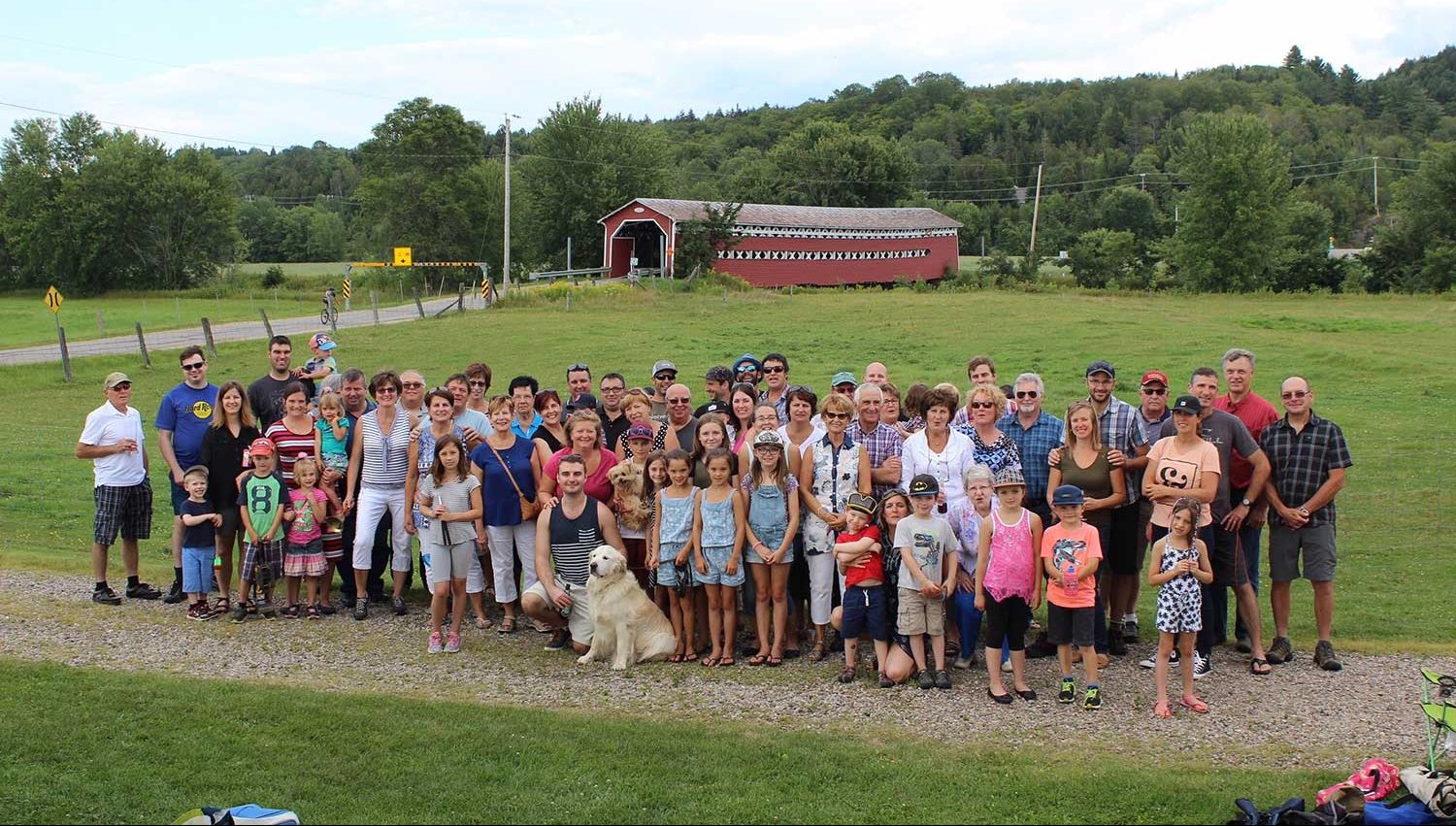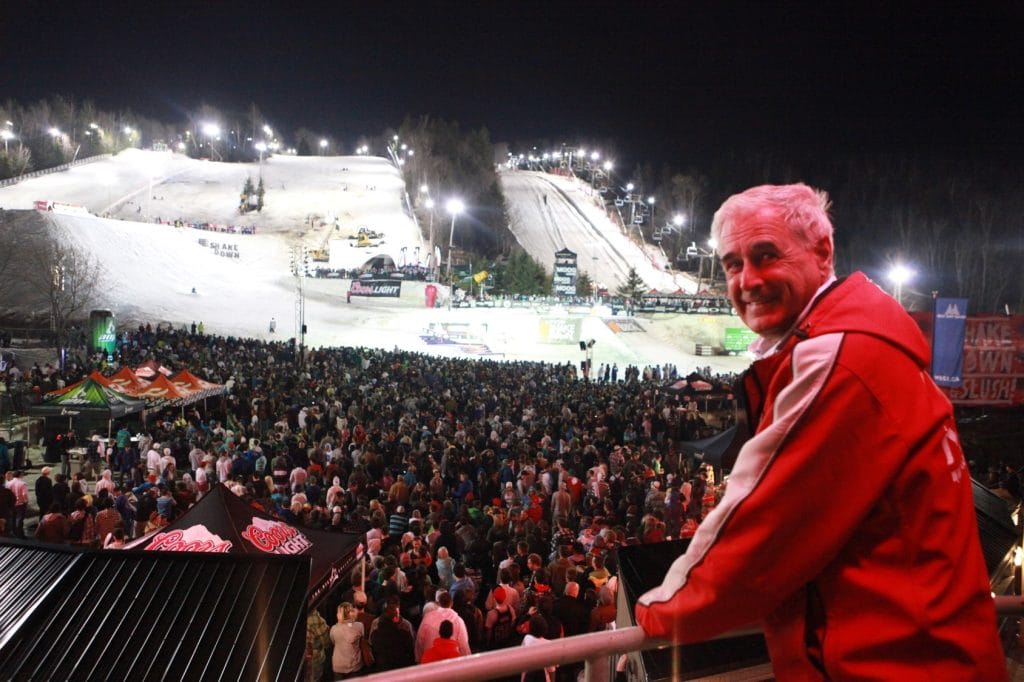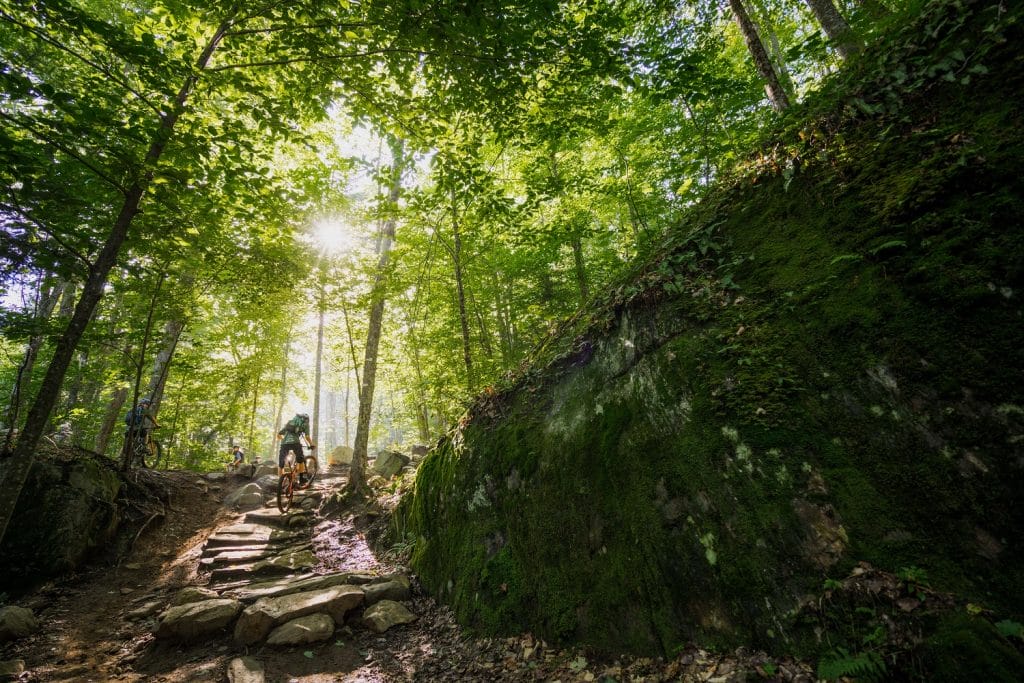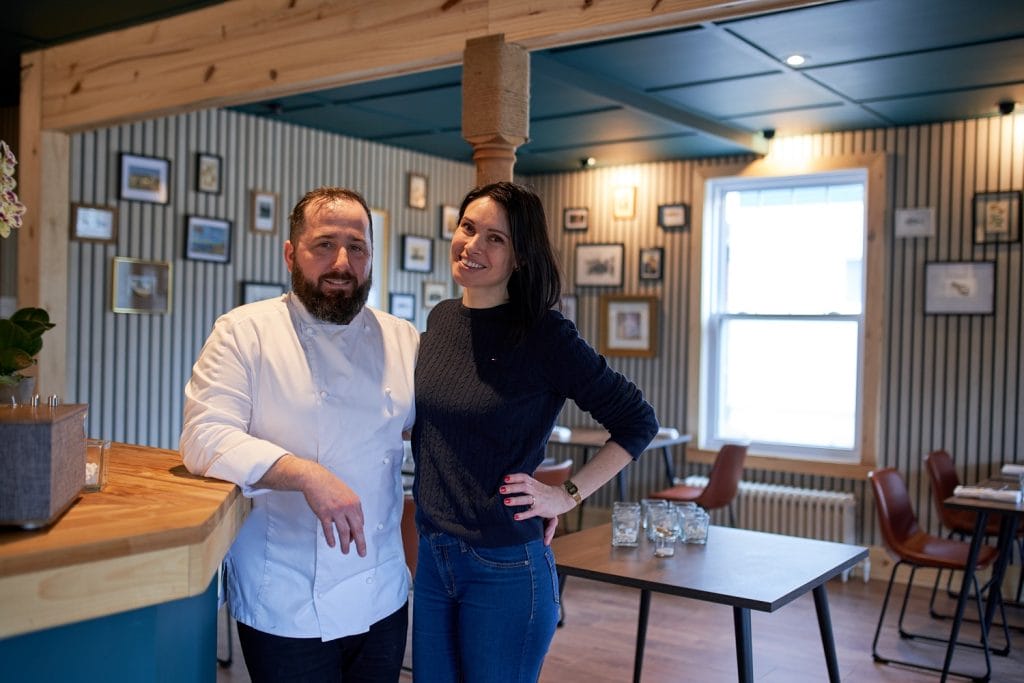The Prud’homme family
You must be familiar with the name: it probably brings to mind the “pont Prud’homme” – the Prud’homme bridge. But while that’s the name of the bridge today, there’s a whole family history behind it.
When the Laurentians were being colonized, colonial companies took charge of settling the families and organizing the parishes. Between 1932 and 1935, 976 families returned to working the soil in the 49 municipalities across Quebec. We’re talking about moving and changing the lives of 5,956 people.
In 1900, after 25 years of marriage, Isidore Prud’homme and his wife Olympe Giroux came to put down roots in Brébeuf. Initially, they signed a lease, with an option to purchase, from a Saint-Jovite merchant for three lots of land to work. They settled there with their eight children: Isidore fils (son), Valérie, Alphonsine, Rosianne, Jos, Virginie, Clara and Alphonse.
In 1908, Isidore built a cheese factory and in March 1909, he acquired the pieces of land he had been working for almost 10 years, for $4,700. To provide some context, the farm was larger than some Swiss cantons.
The neighbouring dairy farms fed the cheese factory, but the farms located on the other side of the river used it to transform their milk, as well. So Isidore installed a barge which travelled between the two banks and, come winter, he created an ice bridge.
In addition to the transportation of the raw milk, workers, children going to school, and all those doing business with the municipalities on the opposite banks of the Diable river used this way of getting across.
In 1913, Jos built a maison de colon (a settler’s house) – which still exists – where he would raise his nine children.
In 1917, Alphonse bought his father’s land, as well as the cheese factory, for $4,000. He had recently married Angélina Desjardins, and the young couple settled there and raised six children: Gabriel, Gérard, Ulric, Thérèse, Suzanne and Elizabeth.
Then in 1918 Alphonse Prud’homme hatched the idea of a bridge to cross the Diable. He made sure that those affected were interested, and a request was drawn up. It was at his home, at the farm, that a public consultation was held with the eight affected riverside dwellers from the west side of the Diable.
What’s hard to believe – compared to our decision-making practices today – is the speed with which the decision and implementation took place. The meeting was in August 1918, the written agreement with the financial support of the Quebec government arrived on September 11, and construction began the first week in October.
The spruce wood used for construction of the bridge was cut at the foot of Mont Tremblant. Transportation of the logs was by water – starting from Lac Tremblant, via the little Cachée river which flows into the Diable – and right through to Saint-Jovite. There the logs were sawn according to plan specifications, after which the wood went by river to the Prud’homme farm.
It was the era of community work bees; everyone put their shoulder to the wheel. With the help of volunteers, after six weeks of construction, the bridge was opened on November 11, 1918. That same day, the end of World War 1 was announced; as a result, the bridge was called the Armistice bridge. The cost: $6,000. Alphonse took on the winter job of spreading snow onto the bridge to allow sleighs to use it.
In 1925, Alphonse sold the land to Harmel Perreault, but he retained the cheese factory and built himself a house on the other side of the road. He ceased operation of the cheese factory in 1952 with the arrival of industrial transformation by the Laiterie Saint-Jovite (Saint-Jovite dairy).
In 1943, Gérard bought back some of the land and built a house where he raised, with his wife Rose-Anna Gauthier, their eight children: Robert, Marie-Reine, Noëlla, Marc-Aurèle, Denise, Fleurent, Annick and Réjeanne. In 1989 Fleurent bought back the dairy farm.
As for the bridge, its name was changed to honour Athanase David, député, ministre and then sénateur. It was not till 1957, thanks to the initiative of Fernando Paquette, mayor of Saint-Jovite, that the bridge was renamed “pont Prud’homme” in honour of the pioneer family which lives, yet today, close to the bridge.
Through generations, the Prud’homme family maintained one tradition: taking a family photo with the bridge in the background. Numerous publications, companies and businesses have also used the image of the pont Prud’homme.
The bridge has been closed for the past five years. Could it still be useful? Of course!
Just ask the farmers who have to take Hwy 117 to get their tractor from one bank of the Diable to the other. Ask the cyclists who used it for a rallying point. Ask the romantics who loved its charm. Ask all those who see in it a part of our heritage. Ask the Prud’homme family, which has lived in this part of the country for six generations!
More from this author by clicking on his photo below.


Peter Duncan123 Posts
Membre de l’équipe canadienne de ski alpin de 1960 à 1971, skieur professionnel de 1971 à 1979 et champion américain en 1965, Peter Duncan a participé aux Jeux olympiques de 1964 à Innsbruck ainsi qu’à ceux de 1968 à Grenoble. Intronisé au Temple de la renommée du ski au Canada, au Panthéon des sports du Québec et récipiendaire de la médaille du gouverneur général, Peter a longtemps été commentateur de ski à la télévision./ Peter Duncan is a Canadian former alpine skier who competed in the 1964 and the 1968 Winter Olympics. He was named to the Canadian National Alpine Team in 1960 at the age of 16 and competed at the national level for the next 10-years until 1970 before retiring.











0 Comments